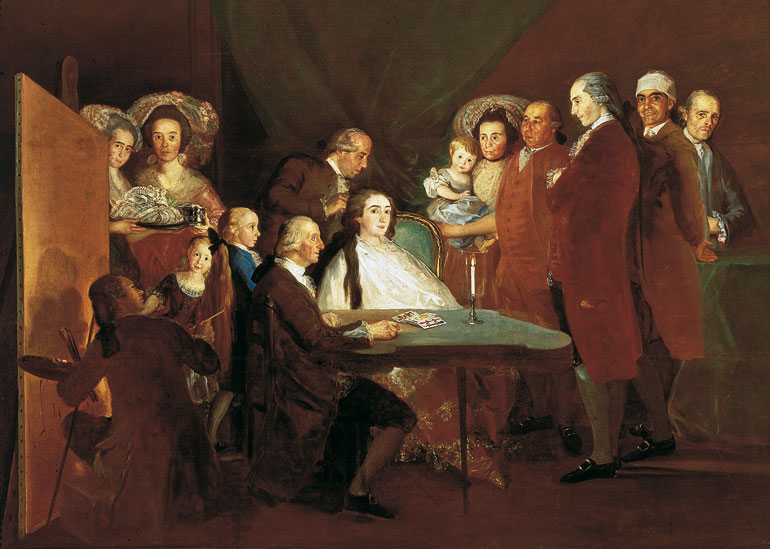
It is not uncommon to see the face of a composer portrayed into a painting of his era: yet, it’s not so usual that the author of the painting is an absolute and celebrate genius.
 As a matter of fact, we possess a portrait of Luigi Boccherini made by none other than Francisco Goya. This famous profile is one of the best known pictures of Luigi Boccherini, and it is part of the renowed “Familia del infante Don Luis”.
As a matter of fact, we possess a portrait of Luigi Boccherini made by none other than Francisco Goya. This famous profile is one of the best known pictures of Luigi Boccherini, and it is part of the renowed “Familia del infante Don Luis”.
Luis Antonio Jaime de Borbón was born the youngest son of King Philip V, King of Spain in 1727: when his older half-brother King Ferdinand VI died without issue in 1759, Luis claimed the throne on the grounds that he was the only surviving son of Philip V who was born in Spain, and the only one still residing in Spain. However valid his claim, Luis lost the succession to his oldest brother Charles, whom, fearful of his brother, exiled Luis far away from the Court of Madrid. He and is wife Dona Maria Teresa de Vallabriga y Rosas – who was, as Goya’s portrait shows, considerably younger than her husband – settled at the palace of Arenas de San Pedro, 120 kilometres west of the capital.

It was there that Goya was to encounter them, a little less than ten years after their wedding. Luis was a lover of the arts and culture, and admirer of musician Luigi Boccherini, architect Ventura Rodríguez and painter Francisco de Goya: he became a patron of new music and built up an impressive picture collection
Painted in 1784, the canvas was Goya’s first large-scale royal portrait, an unprecedentedly informal work which broke the mould of conventional state portraiture. Despite its importance it not a well known painting, being owned by the Magnani Foundation and normally housed in an out-of-the-way villa close to Parma, in Italy.
The family of the Infante is rapresented in such an intimate moment: maybe Don Luis himself desired a portrait of that kind. As written on the Guardian on the occasion of a Goya exhibition at London’s National Gallery “this is a joyous, unruly royal portrait. Their family life appears playful, unconventional, free. Maria Teresa sits with her hair down, as if ready to go to bed, at a table where her husband plays cards. In a candlelit scene, the children are up late – not on their best behaviour. One watches bright-eyed as Goya himself, sporting the same unpretentious hairstyle as the other men, studies the scene before turning back to his canvas.”

In fact on the left one can see the artist himself, while painting the family portrait itself: a sort of “baroque joke”, which is “a liberating, ironising thing to do, but Goya does not stop there. Everyone in this portrait is in different states of self- consciousness, as if Goya were testing how far he could take such self-reflective devices before representation broke down. This painting does not want to be a passive framed scene on the wall; it wants to engage us in its fun.”
The composition is quite unusual too: in fact, just five members of the household look directly at us, and with different looks: Maria Teresa is dreamy, the baby curious, a male member of the household to the right grins at us, as if sharing a joke. Behind him, a more melancholic man looks out anxiously. Luigi Boccherini is depicted in profile, maybe looking at the cards on the table?
Hovever, “it’s a wild house party of a group portrait. No one can be bothered putting on a social mask – least of all Don Luis, who looks straight ahead as if lost in thought. The bright candlelight illuminating this group emphasises the shadows surrounding them. They are happy, but cut off from the outside world, united in their loyalty to the disgraced Don Luis. And Goya, by putting himself in the picture, expresses his own friendship.”


